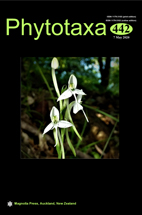Abstract
This study reports, based on molecular phylogenetic analyses and a morphological assessment, the second species of Pacifigeron, an endemic genus of Rapa Island in French Polynesia. Detailed morphological and ecological descriptions, illustrations, IUCN Red List assessment, and a distributional map are provided. Our results support the exclusion of Pacifigeron from the Celmisia group and also allow the re-circumscription of the Celmisia group.
The new species Pacifigeron indivisus can be differentiated from P. rapensis, among other characters, by its larger leaves, larger number of capitula per capitulescence, corollas lacking long uniseriate multicellular trichomes, style of the disc florets undivided, and absence of twin trichomes on the cypsela epidermis. Molecular data indicates that Pacifigeron is related to South American Andean genera rather than to the Celmisia group as was previously proposed.
The Celmisia group is here re-circumscribed to include ca. 159 species distributed in Australasia within the following genera: Celmisia, Damnamenia, Olearia pro parte, Pachystegia, and Pleurophyllum. Given the taxonomic complexity and polyphyletic nature of Olearia, its taxonomy is briefly reviewed based on history, morphology, and phylogenetic evidence, which in turn allows delineation of its species composition within the Celmisia group. None of the Olearia species in the Celmisia group can be retained in Olearia since the type species, O. tomentosa, does not belong to the Celmisia group.

